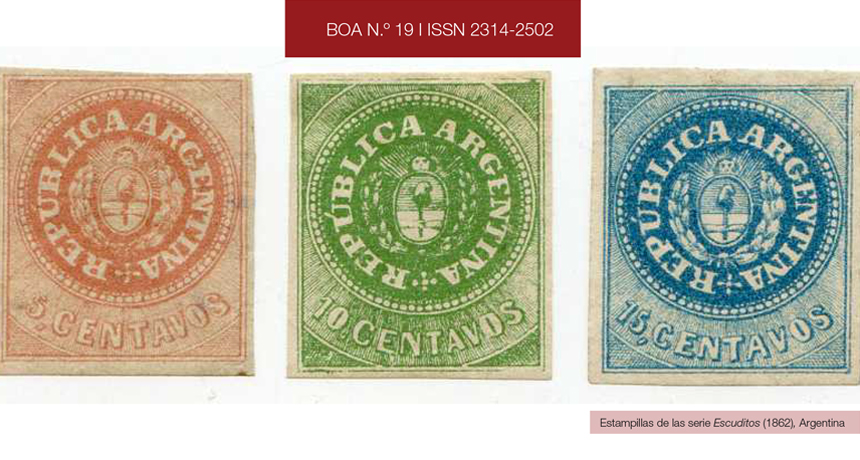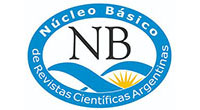Through the Window of Time
Some Cases of Appropriation in Argentine Art
DOI:
https://doi.org/10.24215/23142502e012Keywords:
Appropriationism, imaginary museum, Argentine art, modern art, contemporary artAbstract
The following research is about a specific phenomenon in modern and contemporary art: some Argentine artists appropriate previous national paintings to create their own works. Despite referencing is a constituent item in the history of art, in the present article we argue that the appropriation of national paintings is more frequent in social and political unstable moments. Artists, in those contexts, allude to this previous and canonic works in order to show new possible points of view about the national past. We are going to analyze some cases of appropriation of the painting Sin pan y sin trabajo [Without bread and without work] (1894), by Ernesto de la Cárcova, executed in the twentieth century. Finally, we are going to establish a first approach to the appropriation in Argentine contemporary art, time in which de la Carcova´s painting is frequently recreated.Downloads
References
Alonso, C. (1968). Con pan y con trabajo (1968) [Pintura]. Sin datos
Alonso, P. y Cuello, L. (Coords.). (Agosto de 2018). Vida de pintor. Carlos Alonso [Gacetilla de prensa]. Recuperado de www.coleccionfortabat.org.ar/gacetillas/prensaalonsoago18.pdf
Amigo, R. (2010a). El corto siglo de Antonio Berni. En R. Amigo (Coord.), Berni. Narrativas argentinas (pp. 23-62). Ciudad Autónoma de Buenos Aires, Argentina: Museo Nacional de Bellas Artes.
Amigo, R. (2010b). El hurón. Una lectura tendenciosa de algunas obras de los 30. En C. Rossi (Comp.), Antonio Berni. Lecturas en tiempo presente (pp. 17-30). Ciudad Autónoma de Buenos Aires, Argentina: Eudeba.
Amigo, R. (2017). Un compromiso con el humanismo trascendente. En AA.VV., Berni. Diez obras comentadas (pp. 33-35). Ciudad Autónoma de Buenos Aires, Argentina: EUFyL.
Babino, M. E. (2010). El grupo de París. Ciudad Autónoma de Buenos Aires, Argentina: Centro virtual de arte argentino, Ministerio de Cultura del Gobierno de la Ciudad de Buenos Aires.
Benjamin, W. [1936] (2002). Ensayos. Madrid, España: Editora Nacional.
Berni, A. (1934). Manifestación [Pintura]. Recuperado de http://malba.org.ar/coleccion-online/?idobra=2001.37
De la Cárcova, E. (1894). Sin pan y sin trabajo [Pintura]. Recuperado de https://www.bellasartes.gob.ar/coleccion/obra/1777/
Delhez, V. (4 de julio de 1933). Los vengadores [Grabado]. Buenos Aires, Argentina: La Prensa.
Didi-Huberman, G. (2017). Por los deseos (fragmentos sobre lo que nos subleva). En Sublevaciones [Catálogo de exposición] (pp. 83-182). Ciudad Autónoma de Buenos Aires, Argentina: EDUNTREF.
Espina, T. (2001). Sp y St [La obra tiene un formato en video y otro en fotografía]. Recuperado de http://www.boladenieve.org.ar/artista/1049/espina-tomas
Fantoni, G. (2017). Una breve deriva. En AA.VV., Berni. Diez obras comentadas (pp. 75-77). Ciudad Autónoma de Buenos Aires, Argentina: EUFyL.
Foster, H. (2004). Archivos de arte moderno. En Diseño y delito y otras diatribas (pp. 65-82). Madrid, España: Akal.
Giunta, A. (2009). Poscrisis. Arte argentino después del 2001. Ciudad Autónoma de Buenos Aires, Argentina: Siglo Veintiuno.
Giunta, A. (2010). Arte y biopolítica. En A. Labaké y F. Farina (Comps.), Poéticas contemporáneas. Itinerarios en las artes visuales en la Argentina de los 90 al 2010 (pp. 23-25). Ciudad Autónoma de Buenos Aires, Argentina: Fondo Nacional de las Artes.
Malraux, A. (1956). El museo imaginario. En Las voces del silencio, visión del arte. Ciudad Autónoma de Buenos Aires, Argentina: Emecé.
Malosetti Costa, L. (2001). Los primeros modernos. Arte y sociedad en Buenos Aires a fines del siglo XIX. Ciudad Autónoma de Buenos Aires, Argentina: Fondo de Cultura Económica.
Malosetti Costa, L. (2010). Ernesto de la Cárcova. Sin pan y sin trabajo. En Arte Siglo XIX. Parte II. Catálogo del Museo Nacional de Bellas Artes (pp. 426-429). Ciudad Autónoma de Buenos Aires, Argentina: Arte Gráfico Editorial Argentino.
Marchesi, M. (2010). Redes de arte revolucionario: el polo cultural chileno-cubano, 1970-1973. A contracorriente 8(1), 120-162. Recuperado de https://acontracorriente.chass.ncsu.edu/index.php/acontracorriente/article/view/486
Marchesi, M. (2014). Imágenes de historia contemporánea. Pintura e historia argentina a finales de los años sesenta: la muerte del Che Guevara y la serie La lección de anatomía de Carlos Alonso. En L. Báez Rubí y E. Carreón Blaine (Eds.), Los estatutos de la imagen, creaciónmanifestación-percepción. XXXVI Coloquio Internacional de Historia del Arte (pp. 407-433). Ciudad de México, México: Universidad Autónoma de México. Recuperado de http://www.ebooks.esteticas.unam.mx/files/original/e938173c4a0b9710249dc978b726ada6.pdf
Wechsler, D. (2010). Realidad y utopía. 200 años de arte argentino, una visión desde el presente. Ciudad Autónoma de Buenos Aires, Argentina: Ministerio de Relaciones Exteriores, Comercio Internacional y Culto.
Downloads
Published
How to Cite
Issue
Section
License
According to these terms, the material can be copied and redistributed by any means or in any format as long as a) the author and original source of the publication are quoted (magazine and URL of the work), access to the license is provided and whether changes have been made is mentioned; and b) the material is not used for commercial purposes.
The cession of non-exclusive rights means that after the publication (post print) in Boletín de Arte the authors can publish their work in any language, means and format; in such cases it must be mentioned that the material was originally published in this magazine.
Such cession also means the authorization of the authors for the work to be collected by SEDICI, the institutional archive of the National University of La Plata, and to be spread in the databases that the editorial team considers appropriate to increase the visibility of the publication and its authors.
Moreover, the magazine encourages the authors to deposit their productions in other institutional and thematic archives under the principle that offering the society the scientific and academic production without any restrictions contributes to a greater exchange of the global knowledge.
































